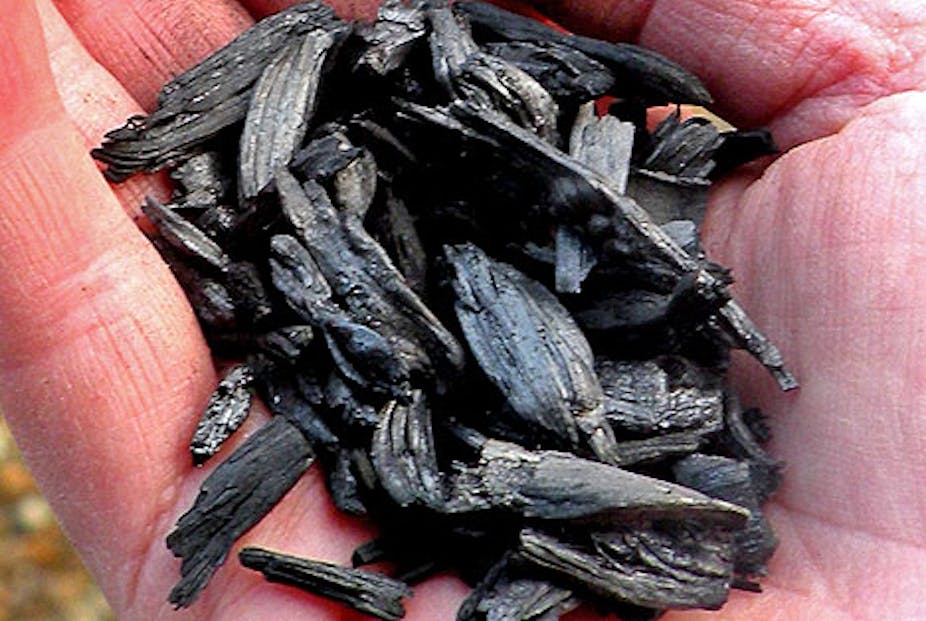In our efforts to address climate change by avoiding or sequestering CO₂, we have shown a lot of interest in “engineering” solutions (such as carbon storage through pumping and storing CO2 underground).
We are also keen to “tweak” nature to increase the uptake of carbon in soil, water or vegetation (for example, through new plant species and land management changes).
The concept and application of biochar lies somewhere in between. It involves an engineering process (pyrolysis - more on that later) and application of the product to the natural environment (soil) to both sequester carbon and, under ideal conditions, improve soil condition.
In turn, this would produce more biomass and sustainable soils.
Unfortunately, as for any new development that looks like it could be the “silver bullet” to solve our climate change worries, there are a lot of myths around biochar. These have led to an often opinionated and biased debate (on both sides of the argument).
While some are convinced that biochar is just an excuse to chop down rainforest and convert every green bit to charcoal, proponents argue that by embracing the biochar concept Australia could offset a significant amount of its emissions.
In addition, proponents argue, there would be an increase in crop productivity whilst reducing fertiliser usage. We could also avoid landfill emissions by utilising waste to produce biochar and bioenergy.
Sounds too good to be true?
Let’s submit the biochar concept to the Myth-Busters for testing and take a more detailed look at what biochar is and what it can and cannot do.
What is biochar?
Biochar is a purpose-produced charcoal. It is made from natural organic matter heated to very high temperatures in an oxygen-limited environment (for example, through pyrolysis).
Due to its chemical structure (3-D arrangement of aromatic rings) it is difficult for microbes to break down biochar. This means it is more stable than the material that it was produced from. This is why it has potential as a way to stabilise (or “sequester”) carbon.
Are all biochars the same?
No, there is no such thing as “a” biochar: biochars made from woodchips at 550°C are very different from biochars made from chicken manure at 450°C. As a result, they will have different potential to sequester carbon. They will also have different results on crops and soil types.
If biochar sequesters carbon and increases crop productivity, why aren’t we doing it?
Unfortunately, the often-cited crop increases are not ubiquitous. Yes, they do occur but our research has shown that the story is a bit more complex.
A crop (for example, wheat) will respond differently to applications of biochars A and B in different soil types, climates and at different biochar rates. We need more research to find out how and why, so we can make the right recommendations.
The other adverse factor is the currently high cost of biochars. This can be in the order of several thousand dollars per tonne if it is sourced from a reputable producer.
Do we have enough biomass to create biochar and bioenergy sustainably?
This is an on-going debate. We don’t want to harvest biomass for biochar when it can have other valuable nutrient uses to soil or the environment.
The issue is about sustainability and caution needs to be exercised. We don’t want to convert food crop land to bioenergy plantations or plant trees in water-limited catchments.
On the other hand, there is a lot of waste that can be channelled to biochar production (for example, food waste, crop waste, greenwaste).
Can biochar make a significant contribution to reducing emissions?
Yes, but only if we also significantly decrease our emissions. Biochar, bioenergy and other alternative energy sources will do little to make a difference just by themselves.
In essence, biochar should be seen as one of many opportunities that we need to investigate and utilise to reduce our emissions, but we cannot rely on it for solving our greenhouse gas emission problems.
The fact is that an emission intensive economy needs to be transformed to an emissions reduced economy in order to significantly cut greenhouse gas emissions.
Further reading:

